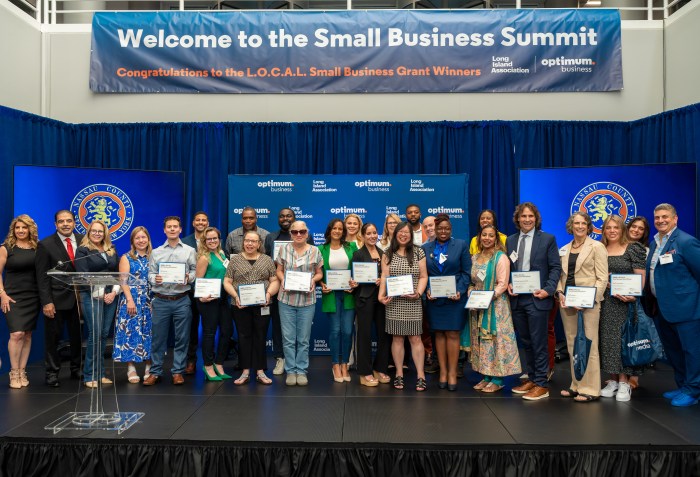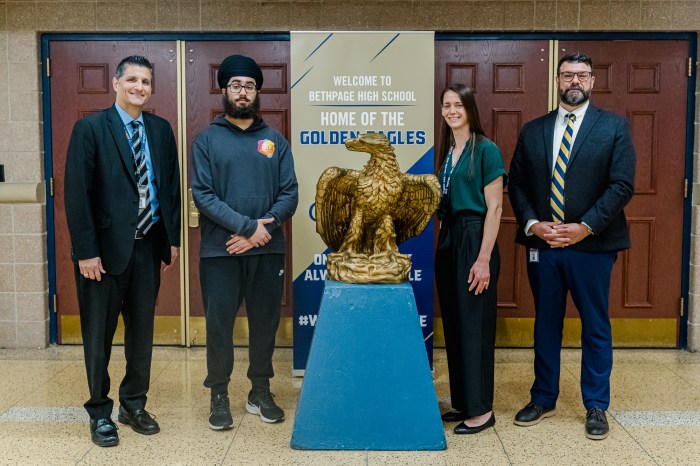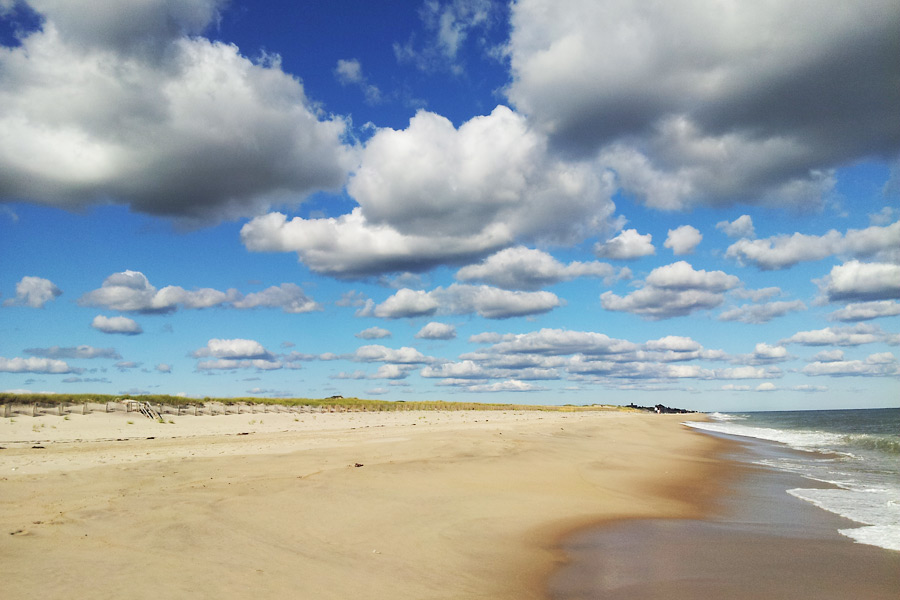Editor’s note: This is part 2 of a story about the 39th twice-annual meeting of the Restoration Advisory Board (RAB), hosted last month by the U.S. Navy at the Bethpage Community Center. The meetings were initiated in 1999 to keep citizens updated about the efforts to remedy and contain the groundwater contamination associated with the former Northrop Grumman facility and the Naval Weapons Industrial Reserve Plant (NWIRP) in Bethpage.
 The contaminated area encompassed by the Bethpage Plume is part of what the Navy calls its Operable Unit 2 and has been named RE108. It extends from just south of Central Avenue in Bethpage (near the old Grumman plant) to just south of the Hempstead Turnpike/Hicksville Road intersection in Plainedge. Test borings have confirmed, at depths of up to 800 feet, levels of trichloroethylene (TEC) at up to 4,700 parts per billion (ppb). Under the state’s Safe Drinking Water Act, the maximum contaminant level for TCE is 5 ppb. The Centers for Disease Control and Prevention lists TCE as a human carcinogen.
The contaminated area encompassed by the Bethpage Plume is part of what the Navy calls its Operable Unit 2 and has been named RE108. It extends from just south of Central Avenue in Bethpage (near the old Grumman plant) to just south of the Hempstead Turnpike/Hicksville Road intersection in Plainedge. Test borings have confirmed, at depths of up to 800 feet, levels of trichloroethylene (TEC) at up to 4,700 parts per billion (ppb). Under the state’s Safe Drinking Water Act, the maximum contaminant level for TCE is 5 ppb. The Centers for Disease Control and Prevention lists TCE as a human carcinogen.
RE108 has been tabbed as a “hotspot” because it has TCE levels of 1,000 ppb and higher. Another hotspot, named GM-38, has been treated since 2009, when the Navy erected a treatment plant astride Route 135 and about 2,000 feet north of Hempstead Turnpike. In the 1990s, several drinking water wells operated by the Bethpage Water District were found to be contaminated by TCE and taken off line.
The remediation system works by pulling water from the ground and then treating the water to remove the volatile organic compounds (VOCs, such as TEC) down to drinking water standards before it is discharged back to a local basin.
According to a handout, “The VOCs are removed by airstripping, which involves passing air through the contaminated water to help the VOCs evaporate faster, and then the groundwater is passed through carbon filters to remove any remaining residual VOCs. After treating the water, the air and chemical vapors are also collected and passed through a carbon filter to remove the VOCs before being vented outside. Extensive water and air monitoring is conducted to ensure compliance with regulations.”
Laura Fly, representing the Navy at the RAB, detailed the cumbersome and bureaucratic process it will take to buy a lot to build a remediation plant to treat RE108. She noted that there is a congressionally-imposed moratorium on purchasing property, though she expects approval from lawmakers if a property was found that met its needs.
David Brayack of Tetra Tech, a Navy contractor, said that property access is difficult and two properties the Navy was looking at fell through.
“We have people looking at aerial maps, scouring them for open areas,” Brayack added. “But between the commercial interests on Hempstead Turnpike and Route 107, and the residential areas south of that” it was proving to be difficult. He said the treatment facility would need about two acres.
“We do have a couple of paths to go, because we are the federal government,” Fly stated. “We may choose to negotiate with a willing property owner, or we may choose condemnation.”
The latter—exercising eminent domain—might add years to the timeline to bring the remediation facility online. The current projection is 2022, which most residents consider too far into the future. It gives the plume, which is estimated to be moving southeast at about 300 feet per year, time to potentially affect wells in the Massapequa and South Farmingdale water district areas.
“I’m sorry, Laura,” said RAB co-chair David Sobolow, who facilitated the question period. “It’s almost 2017 and you’re talking about 2022. For the community in Bethpage, that is not acceptable.”
Fly admitted that the state—the Department of Environmental Conservation has jurisdiction over the cleanup—is not happy either. The Navy has come under criticism from Governor Andrew Cuomo and other politicians.
“This is the most realistic date,” Fly stated. “We will try to get it done quicker.”
A handout by the Navy notes that the area of contamination extends to about 3,000 acres “but it is not distributed evenly throughout the area. Instead of a single, contiguous plume, there are multiple widely dispersed plumes or “fingers.’ ”
The newsletter distributed at the meeting went on to note that “because of the size, depth and variable distribution of VOCs, mapping, manag[ing] and clean[ing] up the groundwater [is] very challenging.”
































